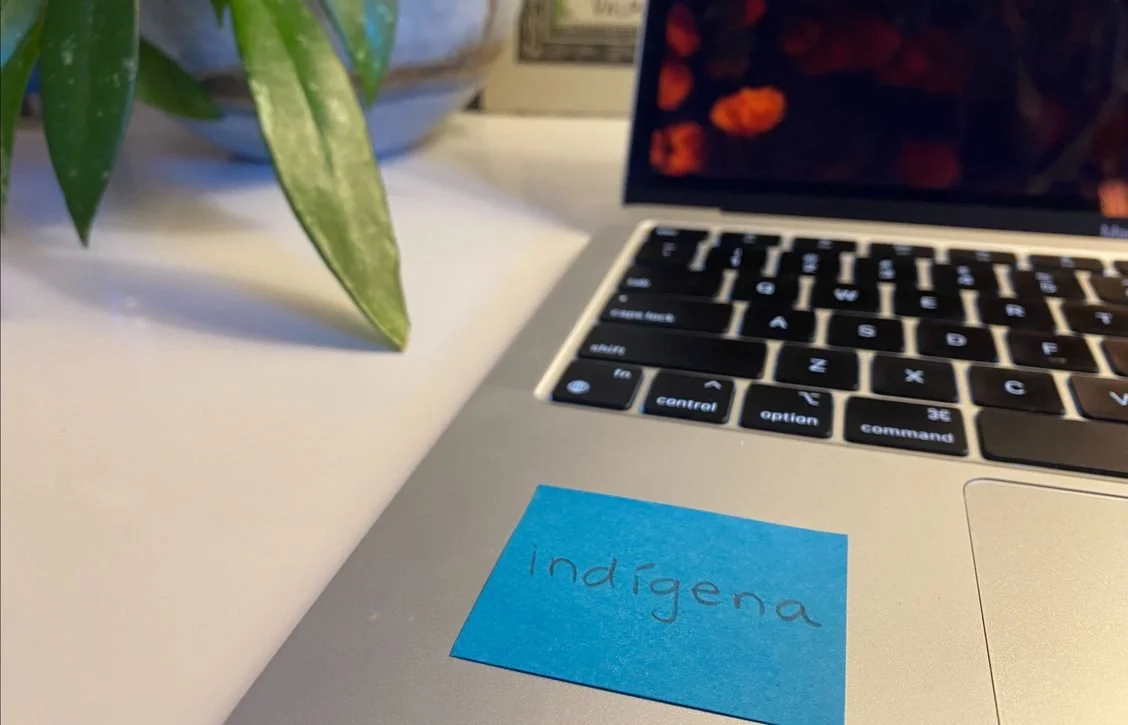Striving to Connect with My Indigenous & Mexican Identities After Immigrating to the U.S.
By Ana Morales Álvarez
“When I’m asked about my first language, I am inclined to say it’s Spanish, although I am uncertain about what my actual first language was. You see, I grew up in a small indigenous town in Michoacán, Mexico, where both Spanish and Purépecha* are spoken. I attended a dual language school where instruction was given in both Spanish and Purépecha. As I reflect on this experience, I find it truly beautiful as it promotes the preservation of our indigenous language that I have since lost.
Speaking Purépecha came naturally to me during my childhood because I was surrounded by it, along with Spanish. I distinctly remember feeling most comfortable speaking Purépecha. However, when I immigrated to the U.S. at the age of eight, I left behind my Purépecha language and started speaking more Spanish because it is a common language between Latinx immigrants and serves as a way to unite us.
I was eventually placed in English as a Second Language (ESL) classes in school. After testing out of ESL in 4th grade, I spoke almost exclusively English at school and with friends, reserving Spanish for home use. Since I didn’t continue learning Spanish in an academic setting, my Spanish proficiency developed in the home environment only.
As an adult, English has become my dominant language, surpassing Spanish. Unfortunately, I have stopped using my Purépecha language altogether, although I still understand it and have a desire to reintegrate it into my life. Preserving it and passing it on to my son is important to me. My mother continues to communicate in Purépecha, using it as the primary language among her family and friends back in Mexico and in the U.S. My three-year-old son refers to my mom as his "mama k'eri," where "k'eri" means "grande" in Spanish or "grand" in English. In Purépecha, the complete word to refer to a grandmother would be "naandi k'eri" [nändi k'eri], which literally translates to "mother grand," conveying the meaning of a respected elder mother.
To me, Purépecha represents my indigenous identity. Understanding the language when my mom speaks it or hearing my son refer to her as mama k'eri fills me with such pride.
Languages serve as bridges connecting us across cultures, and I am so proud to be trilingual. As I reflect on my language journey, I am struck by the fact that the U.S. is one of the few countries that does not encourage multilingualism.
While I tend to instinctively say Spanish when asked about my first language because it is the language I’ve spoken the most besides English, I had the privilege of growing up speaking both Spanish and Purépecha. I can proudly say that I spoke both languages from the beginning. I am making peace with not being the best in all the languages I speak, embracing a mindset of constant learning and understanding the unique language-related aspects that shape my experience.”
Ana is sharing a piece of her story through the lens of language. Her journey with Purépecha is one of struggling to stay connected to her indigenous identity in the face of our monolingual society here in the U.S. Historically, European colonizers imposed their languages to dominate over indigenous languages in the lands colonized as Mexico and California. Imposing monolingualism is a way to break ties among people and to cultures in order to gain power. Ana’s story highlights what a grave issue this still is today. When she came to California, Ana was not encouraged to continue speaking Purépecha and stay connected to her indigenous culture. What’s more, her Spanish was also devalued, leaving her multilingualism tragically undervalued.
Core to our mission at Marin Spanish School is to push back on the notion that one language should dominate over any other language. While we focus on teaching Spanish, rather than indigenous languages, helping young adult and adult students reclaim Spanish as their heritage language that was not developed during their school years is an act of resistance against the systems that left Ana feeling detached from her indigenous culture and failed to support her Spanish in an academic setting.
Remember Ana’s story as you continue on your Spanish journey. By learning Spanish, seeking out culturally diverse social circles, and creating inclusive communities, we can all be a part of the solution to value the rich linguistic and cultural diversity that exists all around us here in California.









